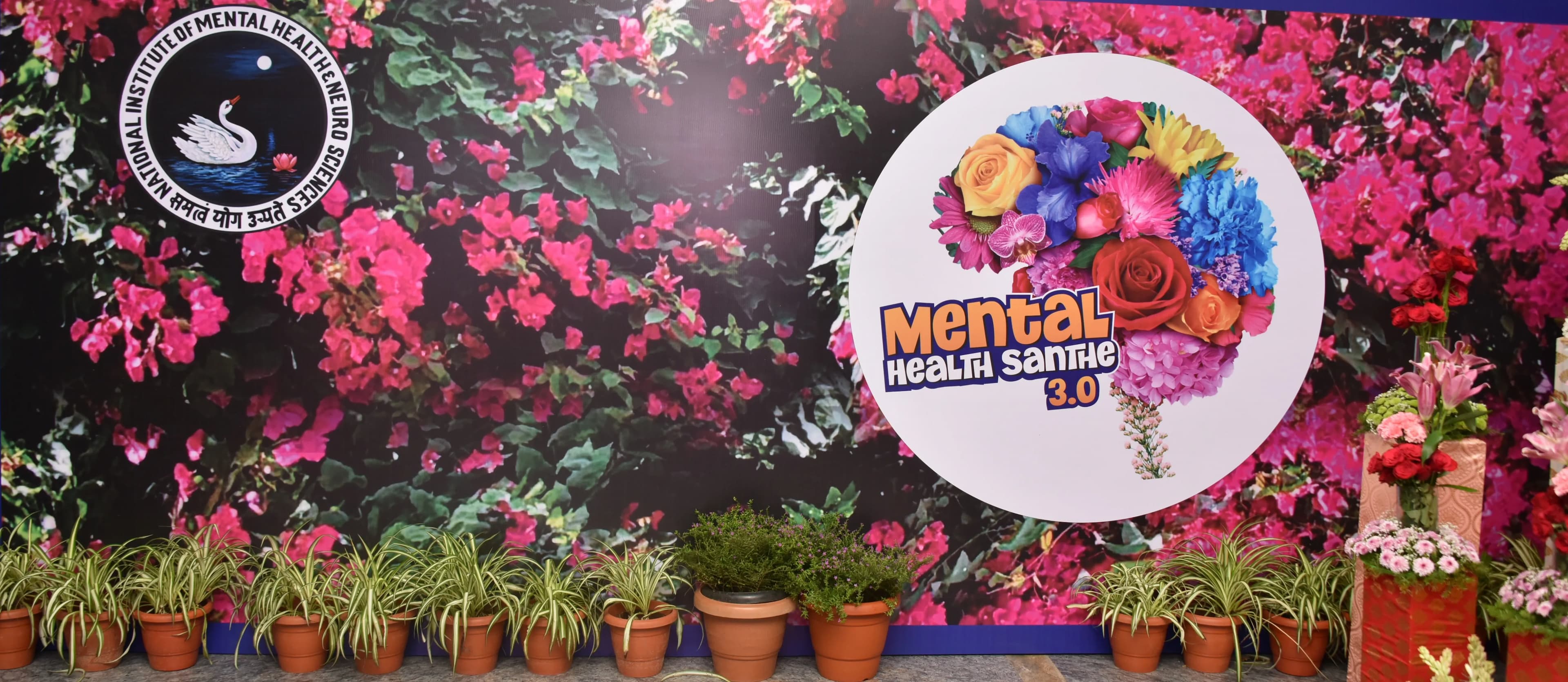I am a
Announcements

Patient Care
Empowering health, transforming lives
Campuses of NIMHANS

Sakalwara Community Mental Health Centre
Sakalwara Community Mental Health Centre (SCMHC) in Anekal taluk is the hub of all community mental health activities. Community psychiatry services are delivered by a multidisciplinary team consisting of psychiatrists, psychiatric nursing, psychiatric social work, clinical psychology, and vocational trainers. The centre has expanded its horizon to offer resource building, training and telemedicine services.


Academics
Inspiring knowledge, cultivating excellence
Awards & Recognitions
NIMHANS has garnered numerous prestigious awards and recognitions, and is consistently ranked among the country's best by respected ranking agencies. These accolades bear testament to the Institute's unwavering commitment to excellence in patient care, training, and research.


We're known for our excellence in every aspect of our work


Nelson Mandela Award for Health Promotion for 2024 by WHO

4th Best Medical Institute NIRF 2024 Ranking


Research
Driving innovation, advancing care
Activities
Fuelling minds, Igniting passion

NIMHANS in Media
Connecting communities, Sharing insights

AFMS and NIMHANS Forge Partnership for Mental Health

NIMHANS, Armed Forces Medical Services tie up to boost well-being of defense personnel

ಮಾನಸಿಕ ಆರೋಗ್ಯಕ್ಕಾಗಿ AFMS ಮತ್ತು NIMHANS ಪಾಲುದಾರಿಕೆ

एएफएमएस और निमहंस ने मानसिक स्वास्थ्य के लिए साझेदारी की

AFMS and NIMHANS Forge Partnership for Mental Health

“NIMHANS and AFMC sign MoU for collaborative research and training”

“NIMHANS inks MoU with AFMS for collaborative research and training”

NIMHANS and AFMC sign MoU for collaborative research and training
From the Director's Desk
It is a great privilege and honour for me to lead the National Institute of Mental Health and Neuro Sciences (NIMHANS) as Director.
NIMHANS is world-renowned as a centre for mental health, neurosciences and allied fields. The vision of NIMHANS is to be a world leader in these areas and to evolve state of the art approaches to patient care through translational research.
Read More


Enquiry Number: 080-26995100,080-26995200
Locate us© 2002 - 2025 NIMHANS, Bangalore-560029, India

















